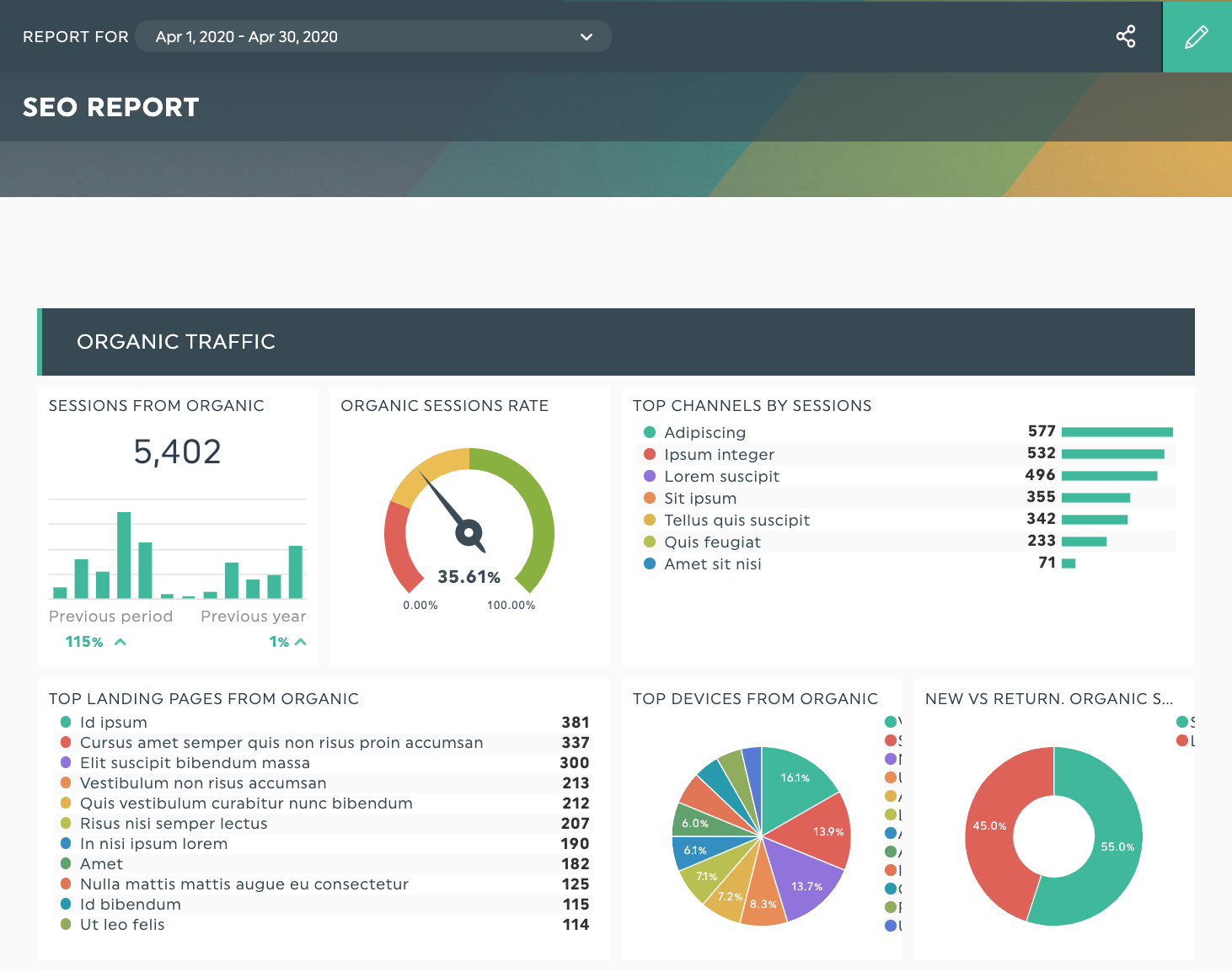How to Create SEO Reports for Clients: A Comprehensive Guide

In the digital marketing landscape, creating SEO reports for clients is akin to a chef presenting a beautifully plated dish. It's not just about the ingredients (data) but also the presentation (report). A well-crafted SEO report communicates your strategy, showcases results, and builds trust. So, how do you create SEO reports that impress clients and drive meaningful conversations? Let's dive in.
The Art of SEO Reporting: Why It Matters
SEO reporting is more than just crunching numbers. It's about telling a story—a story of how your SEO strategy is driving traffic, engagement, and conversions. Effective SEO reports bridge the gap between SEO analysis and client communication, translating complex data into actionable insights.
Crafting the Perfect SEO Report: Step-by-Step Guide
1. Understand Your Audience
Before diving into data, understand your client's goals and expectations. Are they focused on SEO performance metrics like traffic and rankings, or do they care more about conversions and ROI? Tailor your report to their priorities.
2. Choose the Right Metrics
Not all metrics are created equal. Focus on key performance indicators (KPIs) that align with your client's goals. Common KPIs include:
- Organic Traffic: The lifeblood of SEO.
- Keyword Rankings: How well your targeted keywords are performing.
- Conversion Rates: The percentage of visitors taking desired actions.
- Bounce Rates: How quickly visitors leave your site.
- Backlinks: The number and quality of links pointing to your site.
3. Structure Your Report
A well-structured report is easy to navigate and understand. Use clear headings and subheadings to organize your data.
Executive Summary
Start with a high-level overview. Summarize key findings and highlight significant changes. This sets the stage for the rest of the report.
Traffic Analysis
Break down organic traffic by source, device, and location. Use visuals like graphs and charts to illustrate trends.
Keyword Performance
Show how your targeted keywords are performing. Include rankings, search volume, and competition levels.
Conversion Metrics
Highlight conversion rates, goal completions, and any other relevant metrics that show the impact of your SEO strategy on business outcomes.
Technical SEO
Include insights on site speed, mobile usability, and other technical factors that affect SEO performance.
Recommendations
End with actionable recommendations. What steps should the client take next? How can they improve their SEO strategy based on the data?
4. Use Visuals to Tell Your Story
A picture is worth a thousand words. Use graphs, charts, and tables to make your data more digestible. Tools like Google Data Studio can help you create visually appealing reports.
5. Keep It Simple and Engaging
Avoid jargon and complex terminology. Use simple language and engaging visuals to keep your client interested. Remember, the goal is to communicate, not to impress with technical prowess.
6. Personalize Your Report
Add a personal touch. Use the client's branding, include their logo, and tailor the report to their specific needs. This shows that you care about their business and are invested in their success.
7. Review and Refine
Before sending the report, review it for accuracy and clarity. Make sure all data is correct and that your recommendations are actionable.
Tools for Effective SEO Reporting
There are numerous tools available to help you generate comprehensive SEO reports. Some popular options include:
- Google Analytics: For tracking website traffic and user behavior.
- Google Search Console: For monitoring keyword performance and technical issues.
- SEMrush: For competitive analysis and keyword research.
- Ahrefs: For backlink analysis and site audits.
- Google Data Studio: For creating interactive and visually appealing reports.
Best Practices for Client Communication
Effective client communication is crucial for a successful SEO strategy. Here are some best practices:
- Be Transparent: Share both the good and the bad. Transparency builds trust.
- Be Proactive: Don't wait for the client to ask for updates. Regularly share progress and insights.
- Be Specific: Provide clear, actionable recommendations. Avoid vague statements.
- Be Available: Make yourself available for questions and discussions. Open communication fosters a stronger relationship.
Conclusion: The Power of Effective SEO Reporting
Creating SEO reports for clients is not just about data; it's about storytelling. It's about translating complex metrics into actionable insights that drive business outcomes. By understanding your audience, choosing the right metrics, and using engaging visuals, you can create reports that impress clients and build trust.
Remember, SEO reporting is an ongoing process. Regularly review and refine your reports to ensure they continue to meet your client's needs. With the right approach, your SEO reports can become a powerful tool for client communication and strategic planning.
FAQs
1. How often should I send SEO reports to my clients?
The frequency of SEO reports depends on your client's needs and the nature of your project. Monthly reports are common, but some clients may prefer weekly or quarterly updates.
2. What metrics should I include in my SEO report?
Key metrics include organic traffic, keyword rankings, conversion rates, bounce rates, and backlinks. Tailor your metrics to your client's specific goals and objectives.
3. How can I make my SEO reports more engaging?
Use visuals like graphs, charts, and tables to make your data more digestible. Keep your language simple and avoid jargon. Personalize your report with the client's branding.
4. What tools can I use to generate SEO reports?
Popular tools include Google Analytics, Google Search Console, SEMrush, Ahrefs, and Google Data Studio. These tools provide comprehensive data and visualization options.
5. How can I improve client communication through SEO reports?
Be transparent, proactive, specific, and available. Regularly share progress and insights, and make yourself available for questions and discussions. Effective communication builds trust and strengthens your relationship with the client.


By following these guidelines, you can create SEO reports that not only inform but also engage and inspire your clients. Happy reporting!
Belum ada Komentar untuk "How to Create SEO Reports for Clients: A Comprehensive Guide"
Posting Komentar